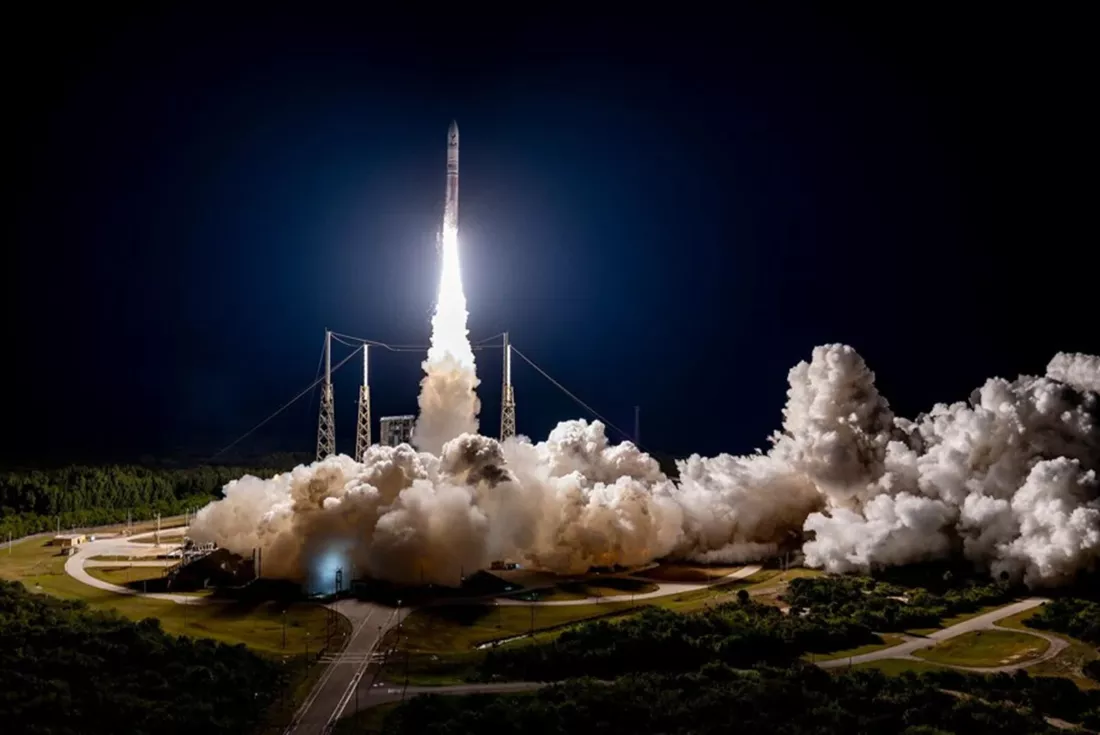 The US Space Force has awarded $13.7 billion in contracts to SpaceX, United Launch Alliance, and Blue Origin under the National Security Space Launch Phase 3 program. The contracts run through 2029 and are the first time that three companies will have simultaneously performing high-priority military satellite missions – a new era of competition for defense space launches.
The US Space Force has awarded $13.7 billion in contracts to SpaceX, United Launch Alliance, and Blue Origin under the National Security Space Launch Phase 3 program. The contracts run through 2029 and are the first time that three companies will have simultaneously performing high-priority military satellite missions – a new era of competition for defense space launches.
SpaceX captured the most contract dollars, with $5.9 billion for 28 missions. ULA captured $5.4 billion for 19 missions, and Blue Origin captured $2.4 billion for seven. The payloads on these missions will be extremely sensitive – such as National Reconnaissance Office spy satellites – and occur in difficult orbits that require high-tech precision. Blue Origin’s entry as a newcomer to an NSSL contract is a milestone in what will be a dramatically altered commercial space market.
A closer look at the books reveals dramatic price differences between providers. SpaceX’s average per-launch price is a paltry $212 million – far lower than ULA’s $282 million and Blue Origin’s $341 million. These prices include not just the launches, but also added services like fleet monitoring and mission-specific analyses.
SpaceX will employ its Falcon 9 and Falcon Heavy rockets for these missions.
The NSSL Phase 3 program, which splits launches into two tracks: Lane 1, for commercial-type missions, and Lane 2 for high-stakes national security payloads. The recently announced awards are under Lane 2 with stringent performance and security requirements to minimize risks. This structure opens the door to newer providers in Lane 1 and Lane 2 for systems with capabilities to meet the program’s most demanding requirements.
Phase 3 is a significant jump over its predecessor, with a projected 84 missions scheduled between the fiscal years of 2025 and 2029 – nearly double the number executed under Phase 2. 54 missions are for Lane 2, highlighting the urgency of this section in making the country secure.
ULA is utilizing its newly certified Vulcan Centaur rocket.
All the providers will use their workhorse rockets for these missions. SpaceX will fly Falcon 9 and Falcon Heavy, while United Launch Alliance will utilize the newly certified Vulcan Centaur, phasing out its older Delta IV and Atlas V rockets. Blue Origin will use its New Glenn, which flew for the first time earlier this year but still needs additional certification before it can handle Lane 2 missions.
The competitive landscape of military space launches has evolved dramatically over the past ten years. ULA previously had a stranglehold on this market, but it now competes with SpaceX’s reusable Falcon boosters, which provide a less expensive option. Since becoming qualified to bid on military contracts in 2015, SpaceX has won more than 40 percent of NSSL missions, cementing its position as a vital partner to the Pentagon.
Blue Origin’s New Glenn rocket made its first flight earlier this year.
Blue Origin is also advancing in this sector but lags behind. The company needs at least one more successful flight of its New Glenn rocket to be fully certified for Lane 2 missions, which is projected by late 2026. ULA, on the other hand, certified its Vulcan rocket after two successful test flights. Engineered to perform complicated orbital maneuvers and long-duration missions, ULA hopes the rocket will make it stand out from competitors.
In addition to Lane 2 missions, Lane 1 welcomes new entrants like Rocket Lab and Stoke Space to enter the military launch market with lower-risk payloads for low-Earth orbit. These lower-intensity missions require fewer certifications, encouraging more participation while still being cost-effective.




